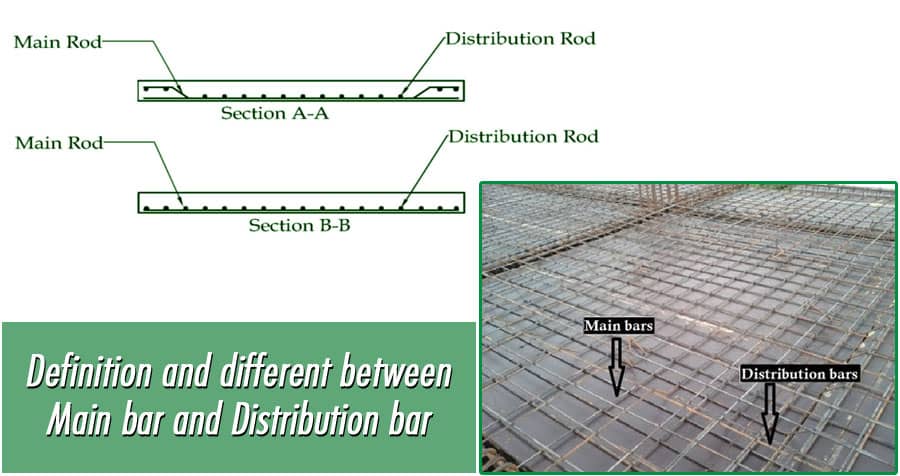Definition and different between Main bar and Distribution bar

Introduction
In reinforced concrete structures, steel reinforcement plays a crucial role in providing strength and durability. Two primary types of reinforcing bars used in concrete construction are main bars and distribution bars. While both serve important functions, they have distinct characteristics and purposes.
Main Bar
Main bars, also known as longitudinal bars or tension bars, are the primary reinforcing bars in a reinforced concrete structure. They are responsible for resisting the tensile forces that occur due to applied loads.
Purpose
The main bars are designed to carry the majority of the tensile forces in a structure. They are placed in areas where tensile strength is required, such as the bottom face of beams and slabs, and the tension face of columns and walls. Main bars provide structural integrity and ensure the stability and load-carrying capacity of the concrete elements.
Distribution Bar
Distribution bars, also called transverse bars or shear reinforcement, are the secondary reinforcing bars in a reinforced concrete structure. They are used to resist shear forces and distribute them evenly throughout the structural element.
Purpose
The primary purpose of distribution bars is to enhance the shear strength of concrete members, such as beams and slabs. They are typically placed perpendicular to the main bars and are responsible for transferring shear forces between them. Distribution bars prevent the formation of diagonal cracks and increase the overall ductility and load-carrying capacity of the concrete element.
Differences between Main Bar and Distribution Bar
Role
The main bar carries the tensile forces in a structure, while the distribution bar enhances the shear strength and distributes shear forces.
Placement
Main bars are typically placed along the tension face of structural elements, such as the bottom face of beams and slabs or the tension face of columns and walls. Distribution bars are placed perpendicular to the main bars, usually in the form of stirrups or links, to resist shear forces.
Size and Spacing
Main bars are generally larger in diameter and spaced further apart compared to distribution bars. The size and spacing of main bars are determined based on the structural design requirements, while distribution bars are closely spaced to ensure effective shear transfer.
Load Distribution
Main bars primarily carry the tensile forces and redistribute them along the length of the structural element. Distribution bars distribute shear forces evenly between the main bars, preventing localized shear failures.
Conclusion
Main bars and distribution bars are integral components of reinforced concrete structures. While main bars resist tensile forces, distribution bars enhance shear strength and ensure the even distribution of shear forces throughout the structural element. Understanding the differences between these reinforcing bars is essential for proper structural design and construction, ensuring the strength, durability, and safety of reinforced concrete elements.
